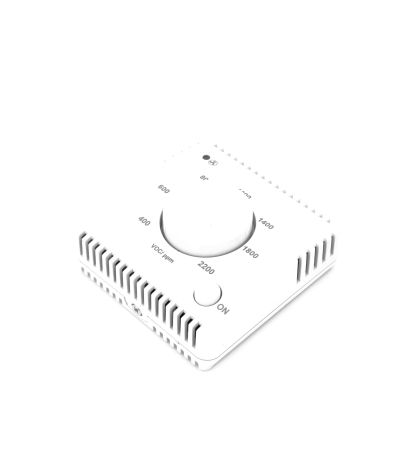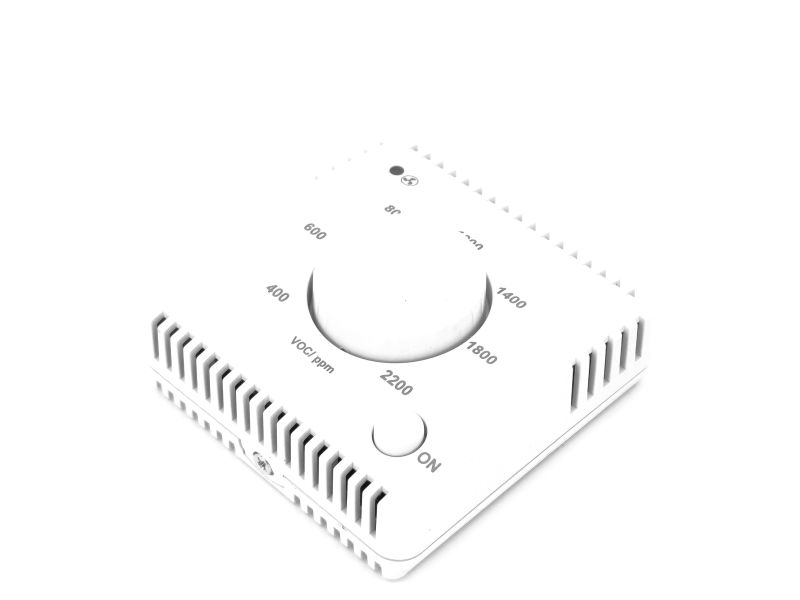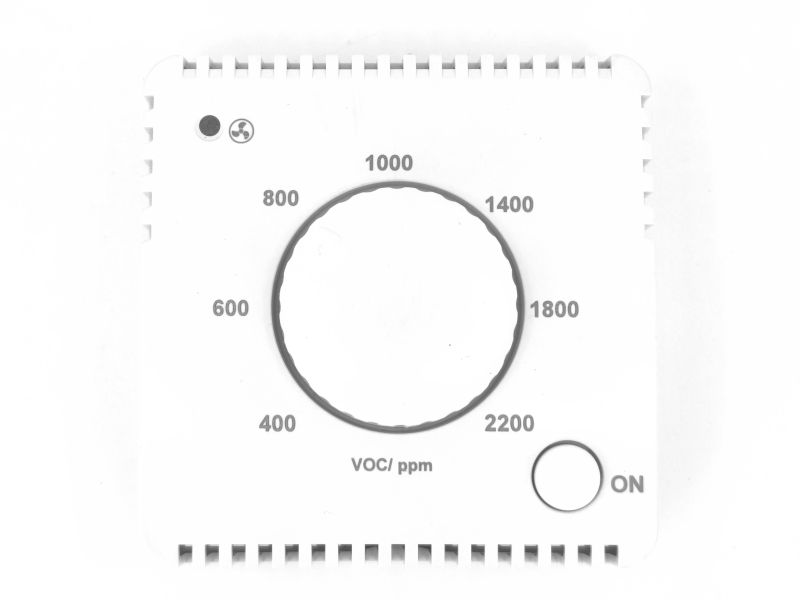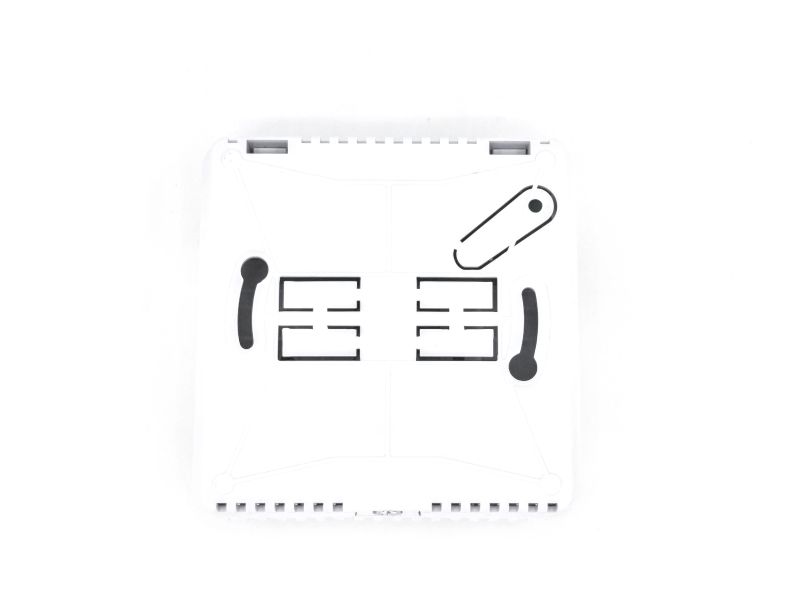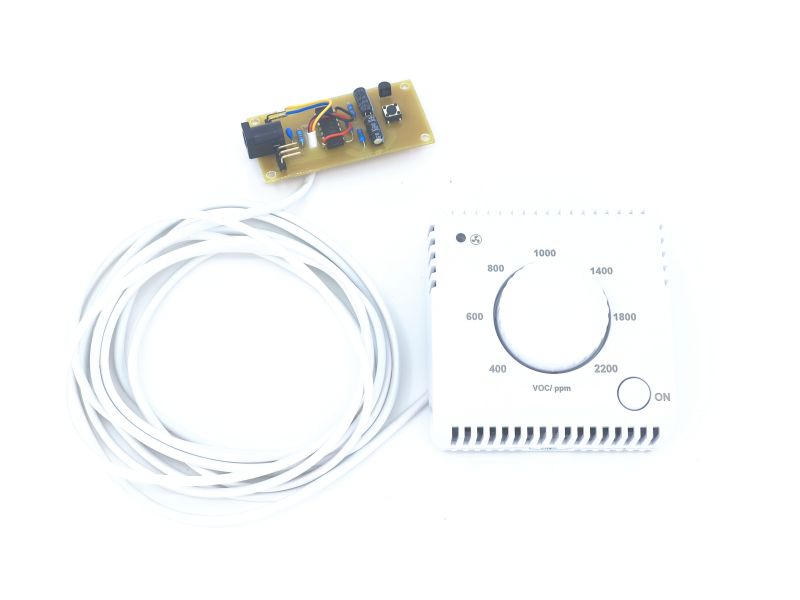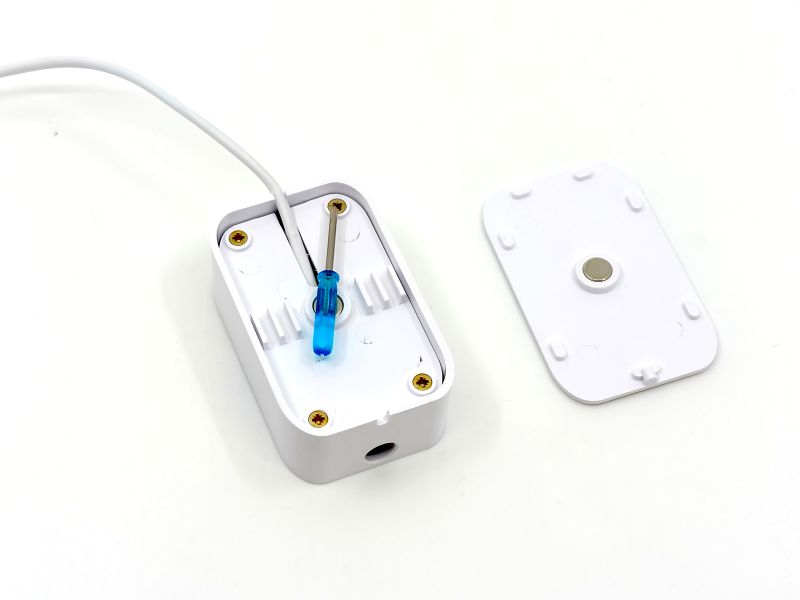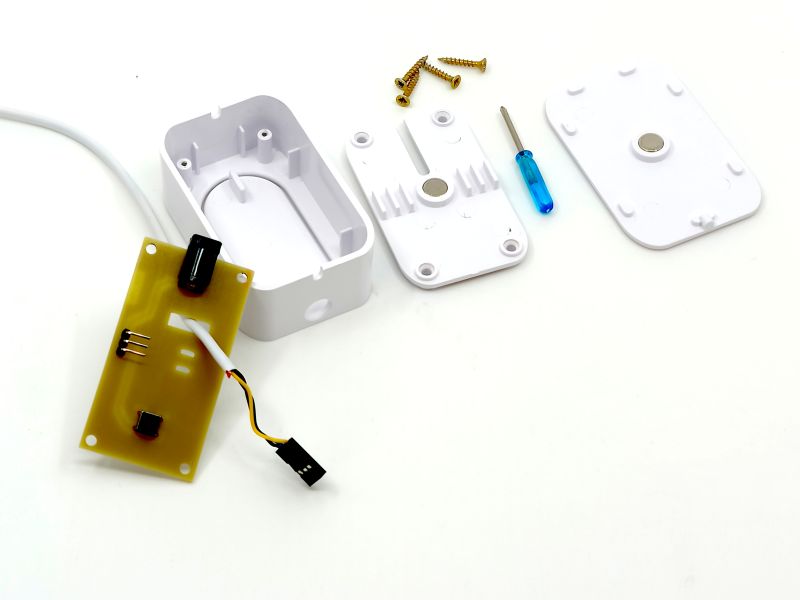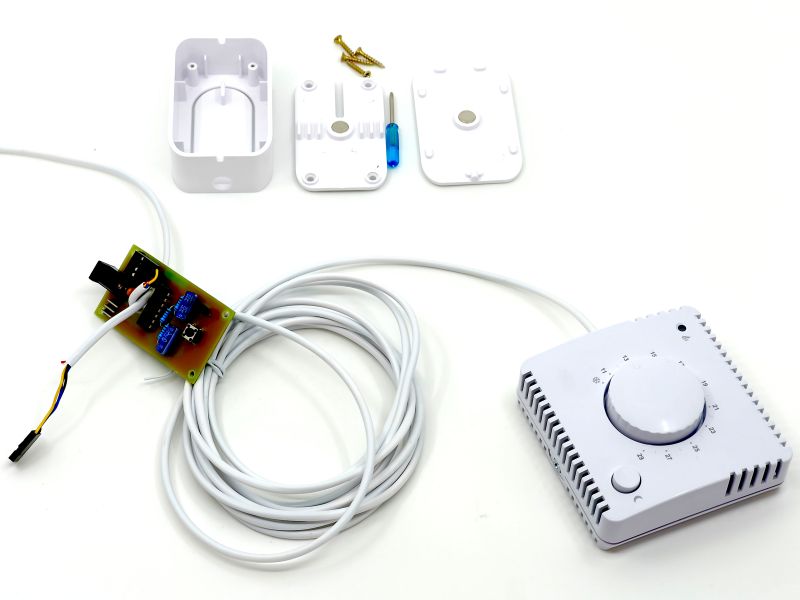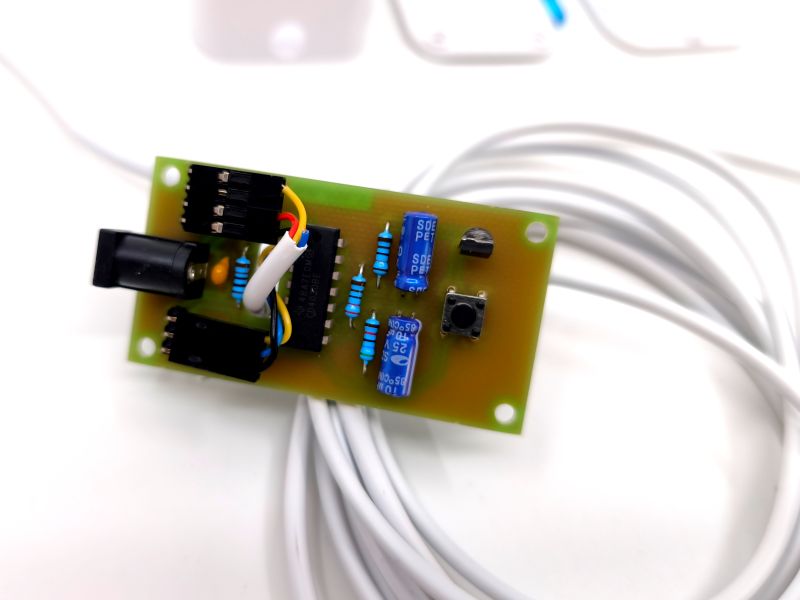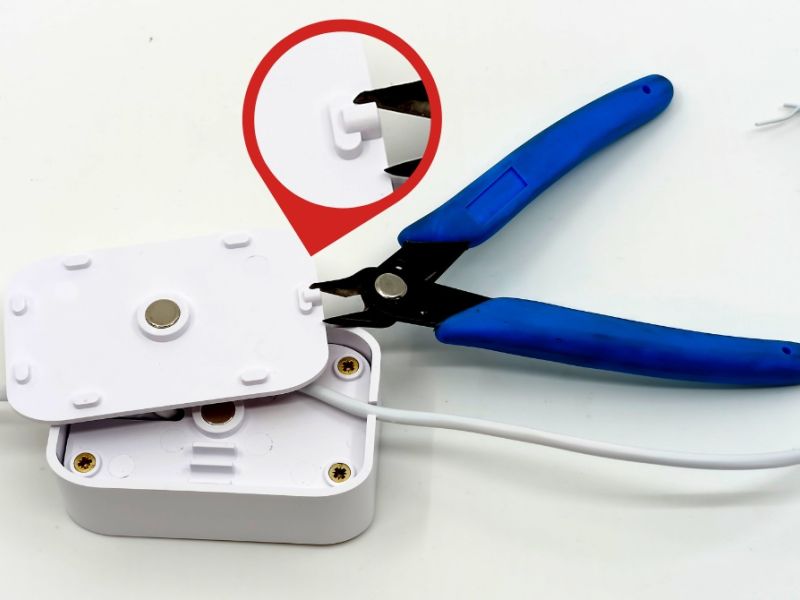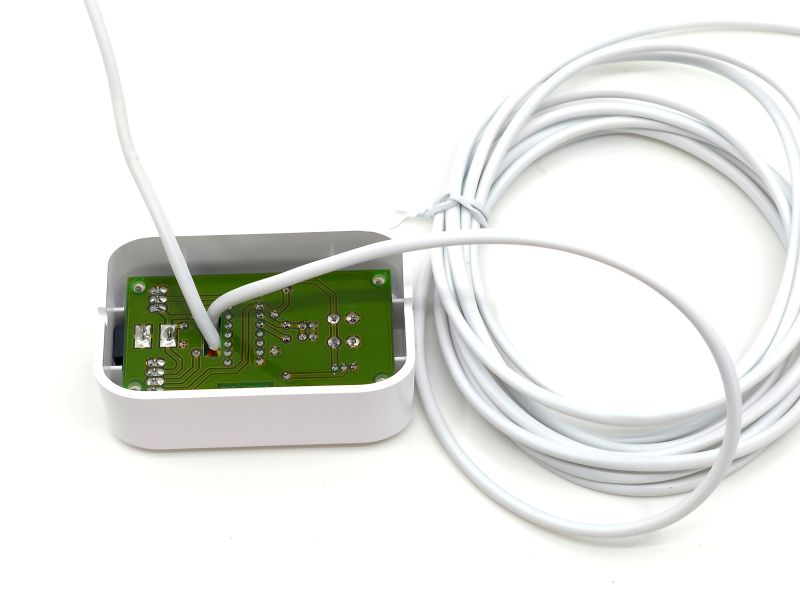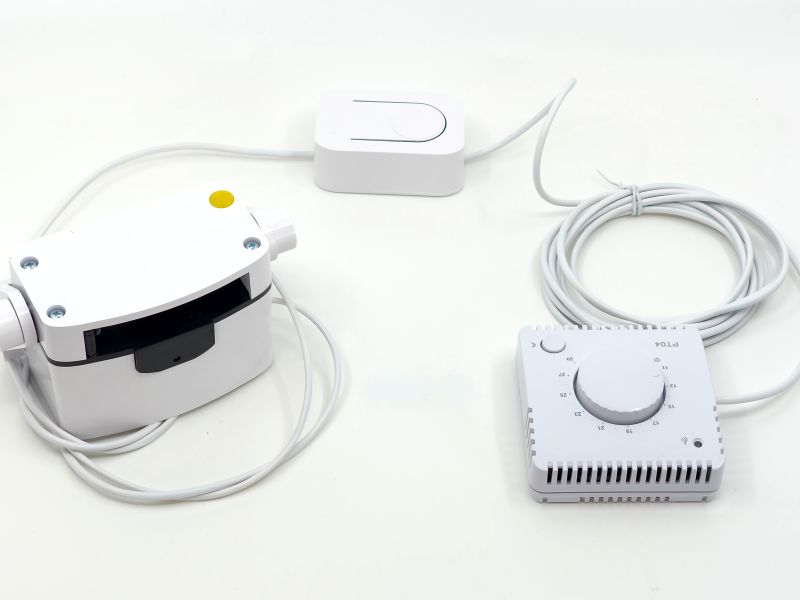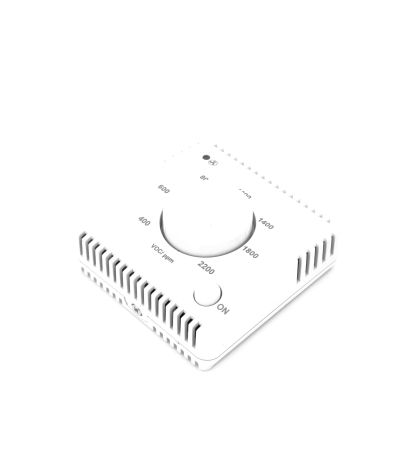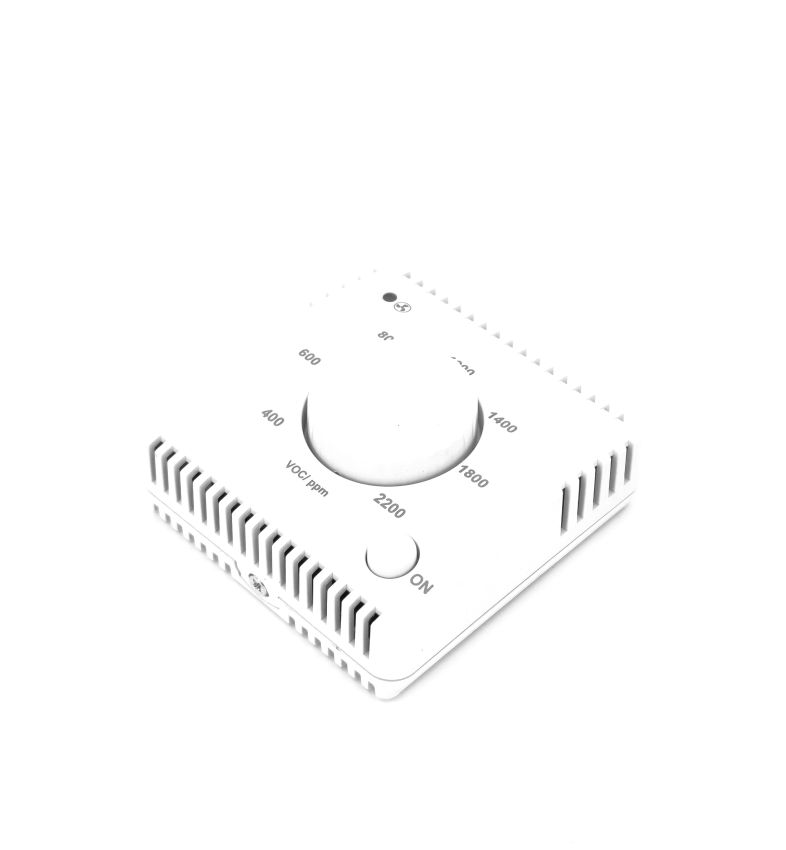Indoor Air Quality Control
This room sensor is designed and configured to fully integrate with the Smarwi system for automated ventilation and window control. It is equipped with a sensor that monitors gas concentrations related to indoor air quality. When the set limits are exceeded, the sensor automatically sends a signal to the Smarwi controller, which opens the window to improve ventilation.
The sensor features an auto-calibration function that automatically compensates for measurement deviations and component aging over time, ensuring long-term accuracy during operation.
The sensor also includes a manual load activation button – a single press activates the output for approximately 10 ±1 minutes. This function can be used to start ventilation immediately without waiting for automatic control.
Safe and Easy Power Supply
Our sensor can be powered directly from the Smarwi 12 V DC power source.
- No separate socket required
- No handling of 230 V mains voltage
- Installation can be done easily without professional qualification
Both power and signal connections are provided through a single shared cable.
How Many Sensors Can Be Connected?
Only one sensor can be connected to the Smarwi system at a time. Choose the one most suitable for your home — combining multiple sensors simultaneously is not possible.
Advantages of the Integrated Solution
- Safe low-voltage connection
- Automatic monitoring of air quality level
- Direct connection with the Smarwi control button
- Manual activation of ventilation by pressing the button on the sensor
- Discreet design suitable for indoor spaces
You Can Easily Connect the Sensor Yourself in 5 Steps
1. Button Preparation
Disconnect the button’s power connector. Remove the magnetic cover from the back of the device. Unscrew the four corner screws (cross screwdriver PZ1). Remove the back cover of the button.
2. Removing the Original Board
Remove the electronic board with the button and attached cable. Carefully disconnect the rectangular cable from the connector.
3. Sensor Installation
Feed the sensor cable through the board opening toward the connector. Connect the sensor’s connector to the electronic board. The black wire must face away from the power connector! Insert the board back into the housing so it fits in its original position.
4. Completing the Installation
Reattach the back cover of the button. Screw in the four screws. Put the magnetic cover back in place. Connect the power connector.
5. Setup and Commissioning
Technical Specifications
- Power Supply: 12 V DC
- Power Consumption:<1 W (0.5 W)
- Hysteresis: 50 ppm
- VOC Adjustment Range: 400–2200 ppm
- Operating Temperature: 0 – 40 °C
- Operating Humidity: 0 – 95 % RH, non-condensing



